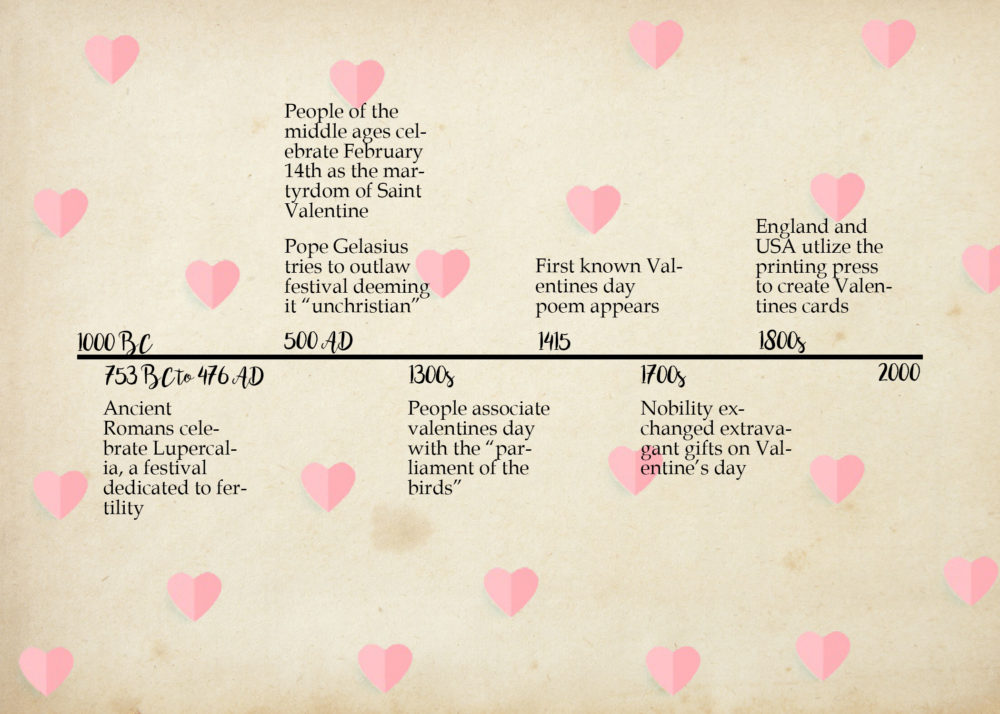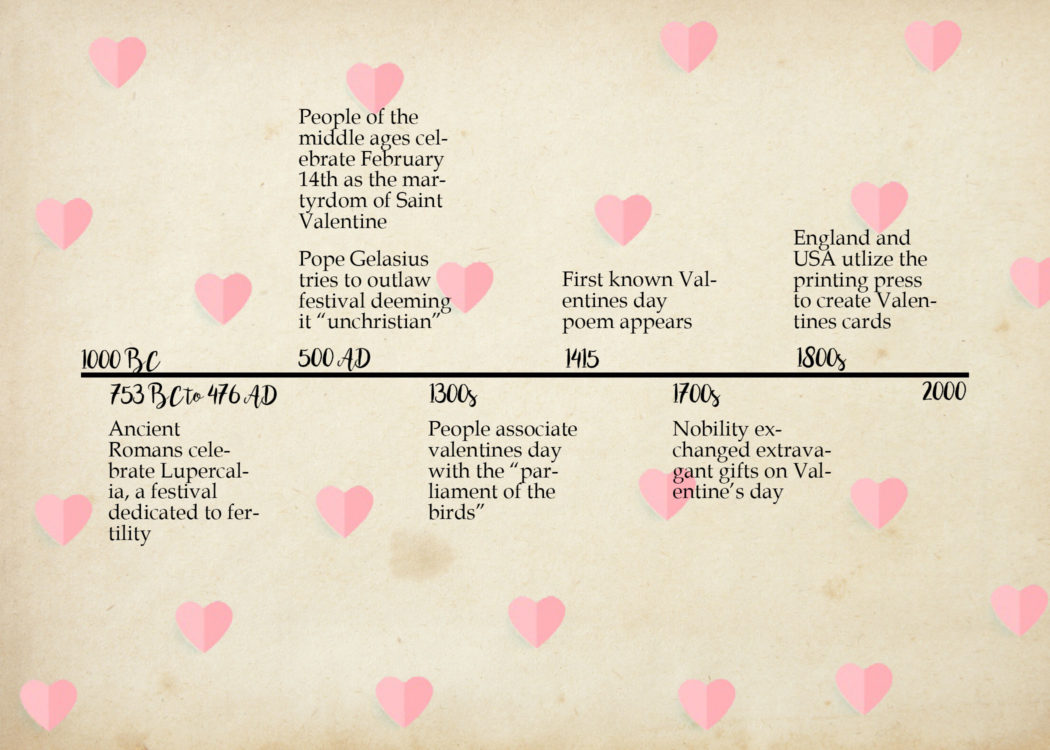The mysterious origin of Valentine’s Day
Valentine’s Day wasn’t always full of chocolates and flowers. The day of love that is celebrated Feb 14 is based on several legends and traditions.
Dr. Eliza Rosenberg, a Utah State University history professor of religious studies, was able to shed some light on how Valentine’s Day came to be.
“It’s complicated. When you trace the history of holiday there are never any straight lines. It’s a tangled web. There are strands that are broken then pick up again and cross over. What we know as Valentine’s Day is patched together,” Rosenberg said.
According to History.com, the first known origins of a Valentine’s Day celebration come from Ancient Rome. In mid-February, Romans would celebrate a festival of fertility known as Lupercalia. It was said if women touched the hides of sacrificed goats, they would experience fortune and fertility in the coming year. It was a celebration full of revelry and sparked controversy with emperors and popes.
Roman Emperor Augustus began to claim that the celebration was too immoral for the people. It wasn’t until the 490 A.D. that Pope Gelasius first expressed negativity towards Lupercalia. The festival remained a custom for a few more years, but was eventually named “unchristian” by the Pope.
“Pope Gelasius complaining about Lupercalia would be similar to having a modern day bishop express distaste towards Halloween costumes, but not really do anything to stop the holiday,” Rosenberg said.
In the middle ages, legends of a Saint Valentine began to appear. Legends from that time period believed Saint Valentine was a bishop during Roman times. According to legend, the Romans were constantly waging war and conquering other lands, which Saint Valentine was opposed to.
At the time Emperor Claudius did not allow married men to be in the army, believing that single men were better soldiers. As part of his opposition Saint Valentine performed many secret marriages to get men out of the army. He kept practicing this after he was told to stop by the emperor and was martyred for it.
 Megan Nielsen
Megan Nielsen A historical problem with this legend is that Valentine was a very popular Latin name, said Dr. Rosenberg. This means there could have been more than one Saint Valentine. One of them might have died on Feb 14 and the people began commemorating that day as Saint Valentine’s day.
Around the 1300s a different legend emerged. People began believing that on Feb 14 there was a “parliament of the birds.” Legend said that on that day, birds gathered together in a parliament to decide who their mates would be. It was a giant love bird party. According to Dr. Rosenberg, Birds were believed to be a symbol of faith, fidelity, and love.
According to History.com, in the 1700s it was popular for the nobility and rich to practice exchanging gifts on Saint Valentine’s day. They would give extravagant gifts to their family, friends and lovers. In the 1800s, English and American printing press companies realized they could make a profit from Saint Valentine’s Day. They began using their printing presses to create nice stationary and cards for people to send to their loved ones on this day, a custom is still practiced today.
Although Valentine’s Day is shrouded in much legend and stories, its theme of expressing love for someone else has survived the test of time.
“It goes back to basic human impulse. We like to form relationships and we like holidays. Valentines Day plays on these sentiments. Throw chocolate in the mix and you have a holiday that everyone will enjoy celebrating,” Rosenberg said.
—shelby.black@aggiemail.usu.edu
@shelbsterblack

